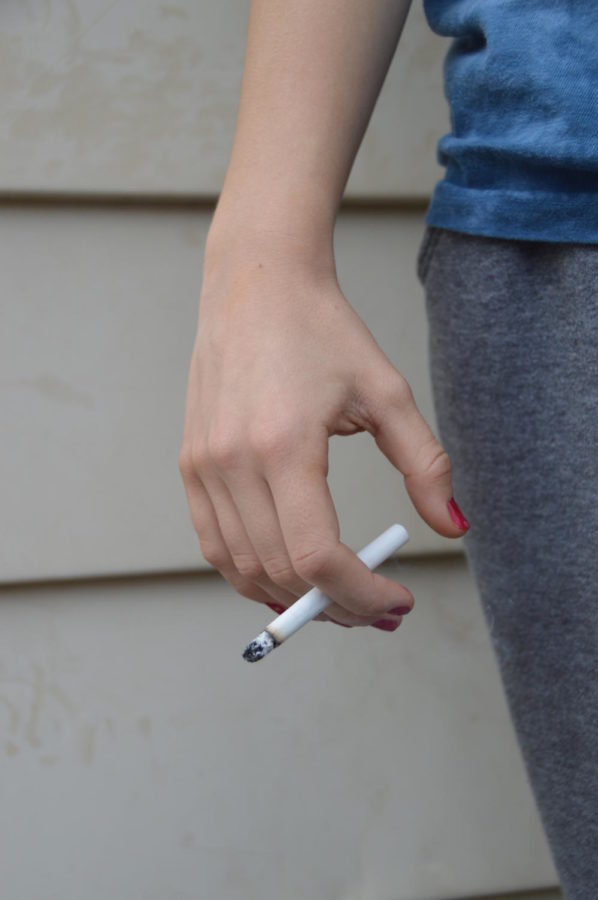Illinois raises tobacco age
May 23, 2019
Use of tobacco products has been on the rise in the U.S., especially with the onset of electronic cigarettes and vaping. Cigarettes, e-cigarettes and any nicotine products are extremely addictive; once users are hooked, they become a lifelong consumer of the product. Teenagers and young people are among the most vulnerable to addiction, according to the Center for Disease Control.
One way to combat youth addiction is to raise the legal purchasing age of such products. In 2016, the city of Chicago raised the legal purchasing age of cigarettes to 21, which seemed like a radical move to supporters of the tobacco industry.
On April 7, Gov. J.B. Pritzker signed a bill that will change the buying age to 21 as a statewide law, effective July 1.
“[It] is a milestone day for the health of our communities and especially our young people,” Pritzker said in a statement. “For Illinois, it will reduce costs for our state, it will make our schools and communities healthier places to learn and live and most importantly, it will save lives.”
Chicago has seen reduced cigarette smoking rates in high school students since they approved Tobacco21 in 2016 due to a high percentage of high school aged students smoking. The raised-purchasing age has only become more prevalent with the rise in e-cigarettes and vaping.
“Our approach to tobacco started before vaping came onto the scene,” commissioner for the city of Chicago’s Department of Public Health, Dr. Julie Morita, said in an interview with NPR. “We recognize the best way to prevent tobacco-related diseases was to prevent young people from smoking. We implemented a number of different things, starting in 2013, however when we did start seeing that the e-cigarettes and vaping was a problem, we really did escalate our efforts. And so, you could see that the trend was rising rapidly, that more and more young people were experimenting with e-cigarettes and vaping, and that the rise was really rapid. That helped us really motivate others [to support the statewide implementation].”
High school smoking rates have decreased to 6%, down from over 13% from when the legal buying age was 18, according to Morita.
Since then, 34 other cities and counties in the state have raised the legal buying age to 21.
E-cigarettes have gained staggering popularity with youth in just the past five years, according to the CDC.
“I’ve seen a huge uptick of smoking cigarettes, and also vaping products by teenagers, young adults,” State Representative from 82nd District, IL House Minority Leader Jim Durkin said in an interview with The LION. “Tobacco is not a good thing for young people, growing bodies…. Nicotine is not good for anyone, teenager or youth.”
Though teenagers using e-cigs may believe it is healthier than traditional cigarettes, there is not enough data compiled on the long-term effects of vaping to know anything for certain.
Over 30 municipalities have already raised the legal smoking age to 21, according to the Chicago Tribune. The legislation Pritzker signed regards cigarettes, e-cigarettes, and other tobacco products that could be considered harmful or addictive.
Around 95% of smokers begin before the age of 21, according to the CDC. While most underage tobacco users acquire tobacco products from a peer, 90% of those suppliers themselves are under 21, according to a public health study done by The Ohio State University. By raising the legal smoking age to 21, teens will ideally not have the exposure to tobacco products and it will lower the percentage of smoking Illinois citizens.
“Our children must never be counted as part of tobacco companies’ bottom lines,” Chicago Mayor Rahm Emanuel said in a statement. “They are our future, not their addicted consumers.”
Tobacco21 is at the forefront of this movement, and they are beginning to gain traction in the U.S. Eight states including Illinois on July 1 will have outlawed smoking under age 21, and 450 cities and counties (including Guam) have policies focused on raising the legal age at the statewide level as well.
Durkin was not initially supportive of Tobacco21 impacting Illinois, though in recent months he flipped his position on the issue, he said.
“What I found so compelling were the anecdotal stories of teens who visited my office,” Durkin said. “Something needs to be done. All these new products just seem to be everywhere; they’re in schools, they’re easy to hide, kids use them at home. It’s become a significant problem both in school and out of school grounds. Our job as parents, but also as adults, is to make sure our kids are living in a safe, healthy environment. I was glad to stand next to Pritzker when he signed the bill.”
Of course, just because people must be 21 or older to purchase these products does not mean that they will not have access to them.
“Are we going to stop kids from smoking at the snap of the finger?” Durkin asked. “No, but we have to place roadblocks— starting to raise the age they can buy [tobacco and vaping products]. Things move very quickly, but we have to get in front of this issue.”
Pritzker is a firm supporter of the movement as a nationwide policy.
“If there are young people who will travel over state lines to buy tobacco products because they can legally buy them there, then I urge surrounding states to pass Tobacco 21 too,” Pritzker said in a statement when the bill pass passed into law.
The Illinois Youth Survey results show that at LT, cigarettes were not commonly used among students and showed that vaping was a much larger issue. Around 44% of current seniors had vaped within 30 days of the survey, and as demonstrated by age trends and substance use, it can be assumed that number has only risen. SC has had to restrict bathroom usage due to vaping, and NC now is able to search students’ bags if they are found loitering in restrooms. LT has not gone untouched by what the CDC is calling an “epidemic” of e-cigarette use among youth, as evidenced by the Illinois Youth Survey results.
The ultimate goal is to protect individual, community and public health with the new law, according to Morita.
“When we make these products less affordable, less accessible and less attractive to youth, they are less likely to use [them],” Morita said.





















![Movie poster for '[Rec]" (2007).](https://www.lionnewspaper.com/wp-content/uploads/2023/04/rec-640x900.jpg)



